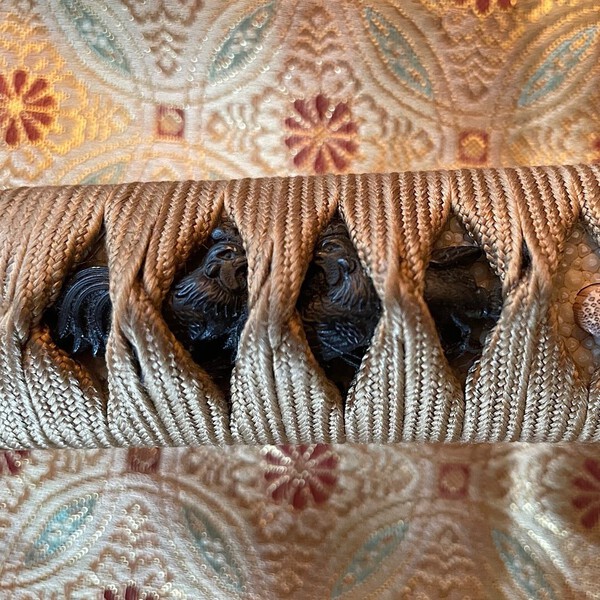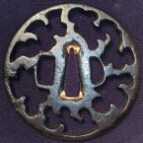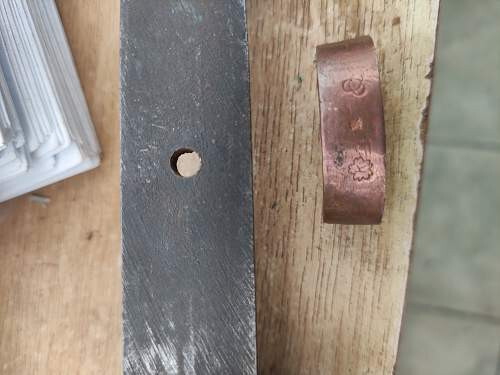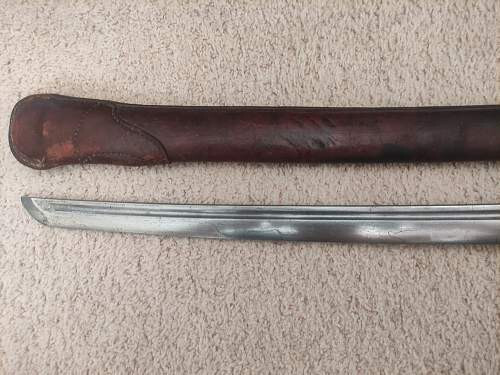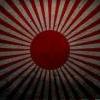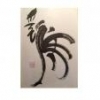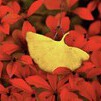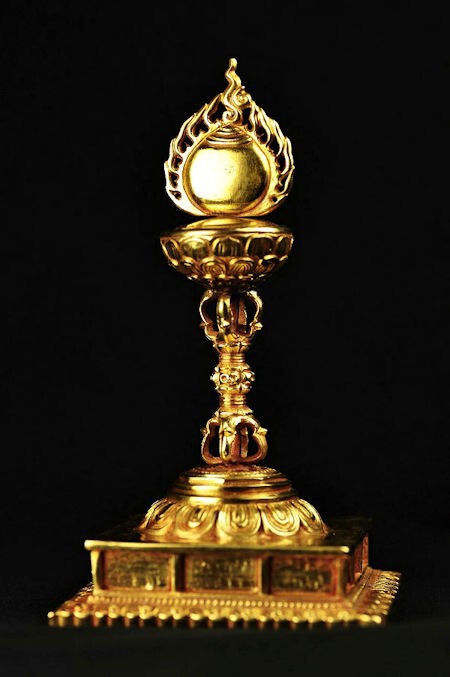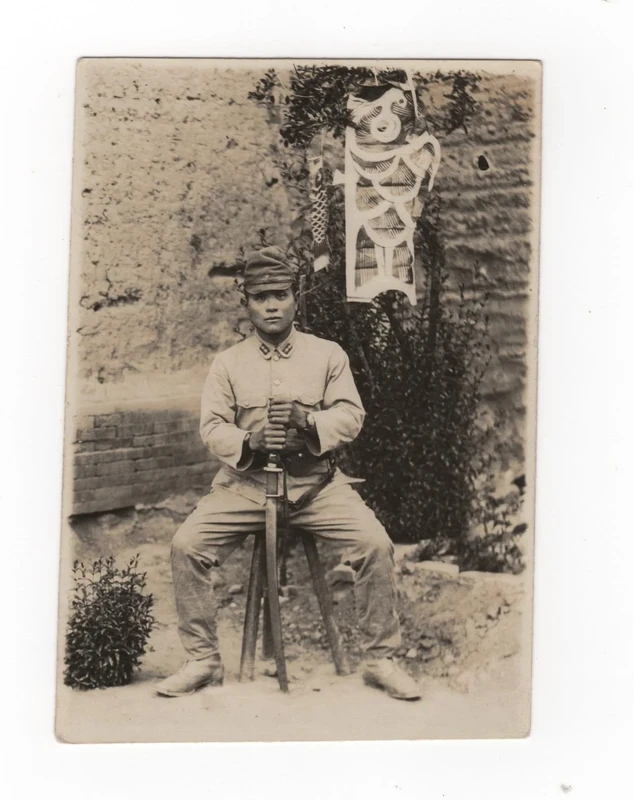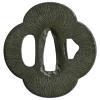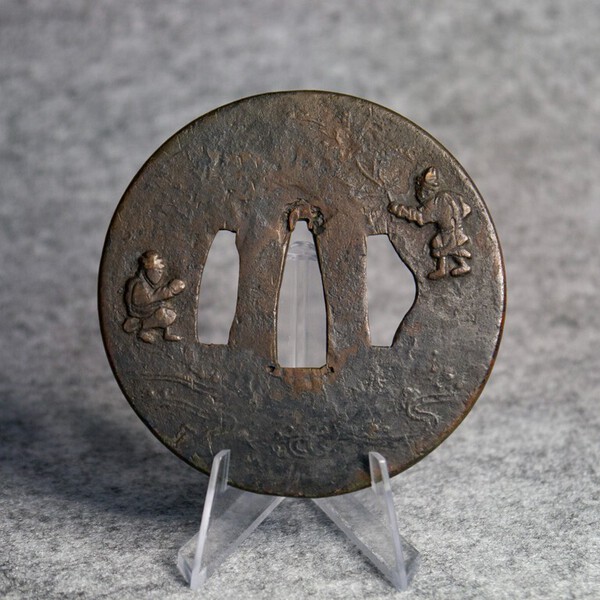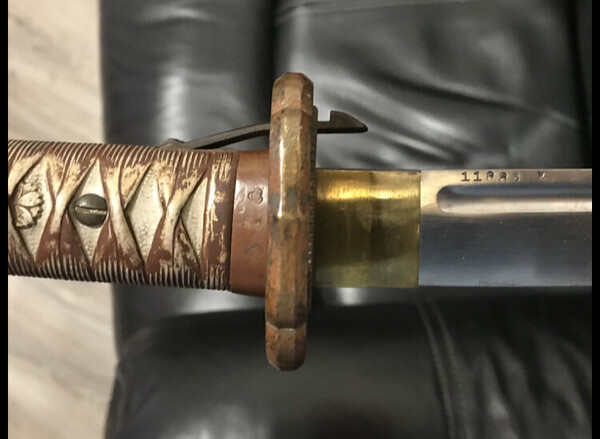Leaderboard
Popular Content
Showing content with the highest reputation on 01/13/2022 in all areas
-
An interesting thread indeed. The UK is fortunate in that contact with Japan occurred not only during the 16th and 17th centuries, but also very soon after Japan was 'opened ' during the 19th century. For a while during the late 19th century there was a considerable interest in Japanese art and culture during which a considerable quantity of Japanese art of all types, including swords and fittings, was imported into the UK. Retailers such as Liberties in London sold vast quantities of lacquer work and other treasures, and if stories are to believe, even used woodblock prints as wrapping paper. Other tales are told of tsuba, tied in dozens on a string, being sold on the London docks, having served as ballast in ships. There is even a fleeting mention of a Japanese armour in one of the Sherlock Holmes stories. All this points to the fact that there still remains a considerable number of armour, swords and considerable quantities of fittings in the UK. We are also fortunate in that some of the earlier collectors have left a corpus of valuable reference material in publications such as the Journal of the Japan Society. This initial enthusiasm for all things Japanese dwindled around the close of the 19th century, becoming positively antagonistic after WWII. It is to such people as B.W. Robinson, whose writings during the post war period, rekindled the current widespread interest. To this earlier category must be added the not inconsiderable number of swords brought back by soldiers who fought in the Far East during WWII. All of this preamble leads up to the obvious statement that we in the UK are blessed in living in a country rich in swords, armour and fittings. Whist there now exist severe restrictions on the acquisition of swords from abroad, plenty of swords are available at arms fairs and many more are available from public auctions. Some of these items are of considerable merit, many having belonged to those who began collecting after WWII and who are now dying off. There are lots of good items out there if you take the trouble to learn what is worth having. Ian Bottomley9 points
-
I went and did the thing that everyone tells you to avoid doing. I had new koshirae made for a katana. I used a set of tosogu from the Edo Period. The Fuchi Kashira is signed by Yoshikawa Mumemitsu. The Tsuba and Menuki are unsigned but the Menuki are attributed as Denjo by the NBTHK. I’m calling the koshirae “The Chicken.”4 points
-
Mal & Co., Ltd, has started off the New Year with yet another tome about gendaitō 現代刀 swordsmiths. This time around, he has focused on the smiths of Aichi Prefecture, which is adjacent to Gifu of Seki fame. This missive runs to 69 pages and is currently available in the downloads section at the top of the page. Cox, Malcolm E. Swordsmiths of Aichi Prefecture (Owari & Mikawa) of the Showa Period. Tōshō Aichi Shōwa 刀匠 愛知 昭和. 2022.4 points
-
2 points
-
2 points
-
Personally, I think it looks great ... and how could you not put those menuki together with that fuchi & kashira? I also like that you chose a more reserved tsuba to balance things out. Congrats!2 points
-
2 points
-
A perfect illustration of the folly of trying to associate a mon with any single family... -tch2 points
-
Steve, found this fully leather-wrapped Kobe 95 on this Warrelics Thread. Also interesting was the owner's observation that the tsuka details were poor, aligning with what we've learned that the Kobe shop losing their contract because of poor workmanship. It also has the double chevron or "W" stamp on the nakago!2 points
-
What a bunch of philosophers ! I collect them for the beauty and the perfection of the weapons that they are - and I like them.2 points
-
Kobe had a very limited run of around 2,000 swords (that's the serial number range at least). I think you had speculated that Kobe may have changed their logo to the 'Ichi', Bruce, based on the serial numbers. My Kobe are all first rate too, really well made. Trystan is right, I think Mizuno was the one that stopped producing swords after getting only 1,000 serial numbers assigned and I am pretty sure Nick mentioned it being due to unsatisfactory results or production issues. How many swords Mizuno actually made is unclear, but considering the sample size and rarity, not many!1 point
-
David be careful with bonsai choji oil. I bought a bottle once and it was like 50 wt. oil. Even with thin coat it may come off in your saya.1 point
-
AH! Now I see it! Due to the photo I couldn't quite make out the upper part of the YASU character. Also totally bungled the Province, but at least I got most of the other characters right. Interesting that MAKIYO was used on some blades. I wish I had better pictures. The "delta" stamp is also interesting as well. 尾 州 住 真 清 正 泰 鍛 之 - BISHU JU MAKIYO MASAYASU KITAU KORE1 point
-
David, looks like Masayasu (Mano as Makiyo) also with "delta" punch, and very "chippy" cutting. See this article page 381 point
-
Yeah, this is not going anywhere near the nearly unissued ICHIHARA NAGAMITSU Type 98 Shin-Gunto we just got, or anything in remotely good polish. In general if I can see a hamon, even if it requires looking in the reflection, all it gets is cleaning and oiling. I've read all kinds of discussions on the different oils that people use for their Japanese blades, including several here. I've had good luck with the Choji oil from "tinyroots", a Bonsai supplier, who claims it is 100% Japanese choji Oil. Blades I oiled 4 years ago haven't shown any noticeable oxidation or changes.1 point
-
The received wisdom is to not use uchiko on a blade that’s in polish as it can damage it. I’d be a bit cagey as to where I got my oil from as whatever is added to it to give it the scent might stain a blade. Clove oil can oxidise apparently. That said, it doesn’t need to be choji oil, light machine or gun oil is fine, do a search on here it’s been discussed often.1 point
-
Welcome Paz! Be sure to post photos of your sword when it arrives. It is an unforgivable sin on this board to talk about new acquisitions without posting pictures. Welcome to this exciting hobby.1 point
-
Hey Stephen, thanks for posting this auction info. I'm bidding on lot 1436 it looks like a diamond in the rough (or more likely a diamond in the very very rough) Thanks again and good luck on what ever you bid on, Tom1 point
-
No, I don't believe for a second that the nakago are polished in Japan. I think leaving the nakago alone is a trade off for polishing the blade. In most metal collecting, patina is left alone and important to the value and id. Because Nihonto are one of the few items that are allowed to be polished (unlike most other militaria etc) I think the nakago are left to fulfill this purpose. And yes, they are indeed vital to dating and identifying the sword.1 point
-
Wow! Steve...I'm amazed. This will take a while to sort through and at the end, there will now be so many mon that I will still not know which one was on my sword. But that's life - nihonto style! Thanks,1 point
-
Nothing about this piece is Japanese. Probably a Chinese made imitation.1 point
-
Got the statue and it's a cool little thing. The swords even got a hamon! Took a short video of it on my cellphone to show some detail.1 point
-
Franco lays out nice, concrete characteristics of “collectible” swords. To his list, I would add that main lines are always much more desirable than the work of documented deshi or later generations. Major smiths always had and maintained a corps of guys who “studied” and supported the main man. Presumably, these smiths went on to fulfill the blade needs of their communities, but as far as I can tell, “school” blades are ‘slow movers’ except maybe in their home towns. Peter1 point
-
Well, some solid resonances here. Where are the Lady Collectors and what are their stories?? What historical figure will speak for them??? For a Collector's wife I have observed there are the Three Rings of Marriage: The Engagement ring The Wedding ring, and The Suffering... BaZZa.1 point
-
I was so confused. I was in two separate hospitals for different surgeries and the nurses in the first were all beautiful, while the nurses in the second were assuredly not. I realised afterwards that their "beauty" was perfectly correlated with the levels of morphine I was being administered. I have some notes I wrote at the time, they're kind of surreal.1 point
-
I did a quick search in Japanese and came up with a list of possible mon for any family named Kume (久米). This screen grab comes from a book on the Kume family. Its a long list of kamon, and includes a lot of old favorites: plum, bamboo, quince, ginger, cloves, tomoe, lines, etc... There is nothing that shows or ranks the most common mon for the Kume family. https://ameblo.jp/yabutsubakime/entry-12628772032.html1 point
-
Wakayama lists two Hiroshige artists using these same characters. One is from Mito (real name of Aida), who sometimes also signed as Hiroshige using a different kanji for shige (廣茂). The other is a late Edo artist whose full art name is Seiunsai Hiroshige (青雲斎廣繁) who often used people in his motifs, so this may be the artist who did the work in this thread.1 point
-
Some of this conversation reminds me of the back and forth between Hannibal Lecter and Clarice in “Silence of the Lambs” (changed a bit to make relevant… and less creepy): HL: First principles… simplicity… read Marcus Aurelius, “Of each particular thing, ask what is it in itself… what is it’s nature?” What does he do? This man you seek? C: He collects nihonto HL: NO!!! That is incidental. What is the first and principal thing he does? What NEEDS does he serve by collecting? C: Anger?… ummm… social acceptance… HL: NO!!! He COVETS! THAT is his nature. And how do we begin to covet? Do we seek out things to covet? Make an effort to answer now. C: No… we just… HL: No… we begin by coveting what we see every day. Don’t your eyes seek out the things YOU want? C: All right, yes…1 point
-
1 point
-
Below are the Thai numbers so that others can translate serial numbers. Tip: cut and paste into a MS word document and then enlarge so as to read better. ๐ = 0. ๑ = 1. ๒ = 2. ๓ = 3. ๔ = 4. ๕ = 5. ๖ = 6. ๗ = 7. ๘ = 8. ๙ = 9. Thai numerals @Stegel Below is the blade & scabbard serial numbers for your sword. This would indicate several thousand were in use. Blade: ๓๓๕๑ = 3351. Scabbard: ๓๔๑๑ = 3411.1 point
-
Your Mantetsu is a 38th series army contract blade. It is the second 38th series blade reported so far. The other one being キ一四四 which is however a commercial marked 興亜一心. Nakago mune: キ 五三六 = KI 536. Obverse: 昭和癸未春 = Spring 1943. There should be a M partial inspection mark either at the top or bottom of the tang. Reverse: 満鍛鐵造之 and the second and third kanji characters are indeed reversed! At the top is the Nan-Man Army Arsenal final inspection mark 南.1 point
-
I think the difference is simple. Someone has blades that tell three or four stories on three or four topics. Consider paying $$$$ to secure the "missing" blades to make these stories complete? No. Neither would 99% of better painting collectors. But in coins or stamps or military decorations you are supposed to spend (max) couple of years before you accept a specialty and collect absolutely every single upper grade item in your topic to tell a "complete story" You don't have the gold denarius with a bull torso reversed to usual - you are just not a proper collector. Better spend $$$$ the next time such piece comes for auction, or you can't show your collection to serious people. "Oh... but he does not have the reversed bull, which is the most rare of them all...". There are exceptionally few paintings or nihonto collectors like that. There are many who collect only koto or even only pre-Muromachi pieces. This does not make them topical collectors or focusing on one theme. Focused collectors are those into Satsuma, or early Soshu or Ichimonji only. This is high end collecting and its not for everyone to begin with. In the same way there are exceptionally few paintings collectors who are 100% Durer. Or even 100%: Master of the ... + Durher + say Danube school. Topical collectors are a bit more common in this field, but still most high end Durher or Durer time collectors will have a wide collection of roughly similar taste and maybe roughly similar time, but that's about it. The top Durer expert of our time owns Rembrandt, Leiden and God knows what else. Its absolutely normal. In the coin world everybody would laugh at him because his collection is not focused on telling one story and telling it in the best way possible. Well, neither did Bigelow's. And its ok to be Bigelow or Compton. Their collections educated hundreds. What was accomplished by the focused, topical collectors who tell a story? Except Pechalov... Well, not much.1 point
-
1 point
-
With the understanding that I haven't seen the sword in hand (it may be wonderful) and also, since I do sell swords, I have a dog in this fight, I think you can do better for the money. 4,500 GBP is about US$6,150; I would expect something more exciting than unsigned Jumyo in shirasaya with a paper for that amount. Grey1 point
-
That's a such a multi-faceted question, Paz, that it is hard to know where to begin. A Mon or Kamon shows close or distant allegiance/affiliation/association with a particular clan or family, used with permission, (but in later centuries increasingly without permission from anyone). It is rare that a Mon alone can be used to pin down anything historically, but in some cases it is clear from the rest of the circumstantial evidence that it can be the final authenticating piece within an overall package. On average I find that the presence of a finely executed Mon adds a touch of cachet, a dash of romance, (I hate to use the debased word 'class'), like the cherry on a cake. PS Just noticed another mini question in there. Old blades are very rarely found in their original Koshirae. The number of mekugi holes in the nakago will give you an indication of how often the koshirae was changed. If it's a good blade that has been passed down between or within illustrious families, it could be that in a time of opulence the owner has decided to fit it with a splendid-looking koshirae, studded with family crests (Kamon). Generally such a blade and package will fetch top dollar today.1 point
-
I have never regretted joining the To-Ken Society - in fact one of my best decisions ever, together with following this portal/community for well over 16-17 years. The NMB provided theoretical knowledge while the To-Ken meetings enabled me to see swords and koshirae first hand and hear more experienced people describe these items while teaching us. Of course, once one builds an own network of contacts, then it becomes easier to navigate the field solo. But still, the social and educational elements are valuable. In informal and interpersonal meetings, one can learn and share a lot more than publicly..... People sometimes focus too much on price. Price is an important element of a purchase but so is the quality of the item, the guarantees, the deferred purchasing methods that some offer, the trustworthiness, the investment in a relationship with someone who might offer you items that will never be published officially on a website et cetera. Also, my main piece of advice is to defer a purchase until you can make your own judgment rather than rely on judgements by others. If it takes years, so be it. It might be better than burn money, burn bridges/relationships, get disappointed, acquire something that in a year you will not like anymore as you have changed your mind or did not know what you were buying in the first place.1 point
-
1 point
-
春日製造所文忠作 Kasuga Seizōsho Fumitada saku This may be the same smith as Harumoto mentioned on the site below. https://www.japaneseswordindex.com/gendai2.htm Would like to see the date side without the boxes on it. I think you have the date right, but the "kore" by itself at the end doesn't make sense.1 point
-
1 point
-
0 points
-
Looks like I misinterpreted some advice. Well, that sucks. Now excuse me while I go drink the rest of the rubbing alcohol then find out if it's too dull for seppuku... Sigh0 points
-
Wow it looks like a thinking cap is needed tonight to address the psychoanalysis being conducted on the motive behind "collecting". 1) There are several forum members that have demonstrated writing ability that, if desired, can formulate a thesis or dissertation on the edifice of collecting. 2) There is the empirical evidence that does suggest that Mazlow's hierarchy of needs comes into play, and can be manipulated by the presence of outside factors such as psychoactive drugs. (I personally believe that some psychedelics "distort" the brain physiologically to the point where psychological abnormality can normalize. This exponentially increases the risk of a nervous breakdown in the long term.) 3) Imagine likening the various formulations of "collections" to identifiable psychological processes. Insecure attachment being linked to hoarding for example. I'll check to see where this ship sailed from here in the morning.0 points






